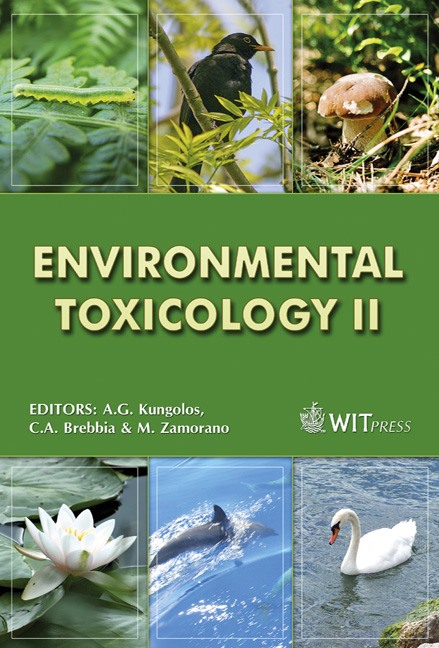Assessment Of The Lead And Cadmium Contamination Levels In The Lublin Region Wetlands Using Mallards (Anas Platyrhynchos) As A Contamination Vector
Price
Free (open access)
Transaction
Volume
110
Pages
9
Page Range
139 - 147
Published
2008
Size
352 kb
Paper DOI
10.2495/ETOX080151
Copyright
WIT Press
Author(s)
H. Bojar & I. Bojar
Abstract
Human activity emits vast amounts of heavy metals into the environment. Toxic elements that permeate through the biosphere are incorporated into the trophic chain where they are harmful to all living organisms. The aims of this research were: identification of risks and dangers to the environment in the Lublin Region associated with contamination of selected organs of the mallards by toxic elements; determination of concentration levels of selected heavy metals (Pb, Cd) in the organs and tissues of mallards (Anas platyrhynchos); an attempt to identify the organs that would allow quick and unambiguous establishment of the mallards’ condition, determined by the accumulation of toxic elements; assessment of usefulness of the mallard muscle tissue for human consumption in the context of applicable legal regulations being in force in Poland. The concentration of polluting heavy metals was ascertained using the atomic absorption spectrometry method (AAS). The highest average concentration of cadmium was found in the kidneys of mallards bred in the Przytoczno animal farm. The highest average concentration of lead was found in the livers of mallards bred in the animal farm in Przytoczno in 2001; in 2002 the highest average concentration of lead was identified in the livers of mallards culled in the Częstoborowice area. The highest concentration of lead (Pb) in the organisms of mallards was found in their livers, while the highest concentration of cadmium (Cd) was observed in the kidneys. There is a strict link between the levels of heavy metal concentration in the organisms of examined birds and the area where the research samples were taken. The quality of fodder used in mallard farming should be monitored in order to reduce the risks of heavy metal contamination. Based on the research findings it is impossible to identify the organs that would allow quick and unambiguous establishment of the mallards’ condition, determined by the accumulation of toxic elements. The observed levels of concentrations of lead and cadmium are harmless to consumers. High concentration levels of heavy metals in the examined organs of the mallards found in some cases justify further monitoring of the environment. Keywords: mallards, heavy metals, concentration, environment.
Keywords
mallards, heavy metals, concentration, environment.





